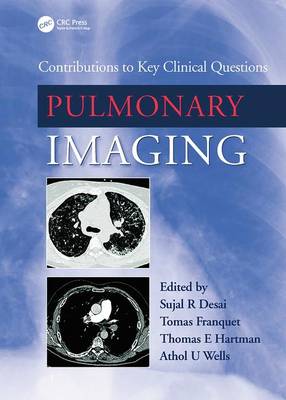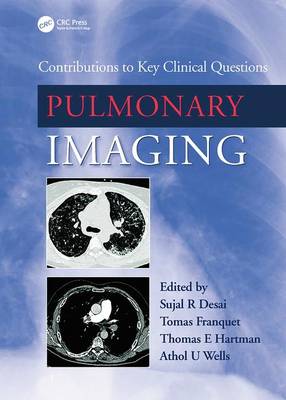
- Retrait gratuit dans votre magasin Club
- 7.000.000 titres dans notre catalogue
- Payer en toute sécurité
- Toujours un magasin près de chez vous
- Retrait gratuit dans votre magasin Club
- 7.000.0000 titres dans notre catalogue
- Payer en toute sécurité
- Toujours un magasin près de chez vous
Pulmonary Imaging
Contributions to Key Clinical Questions
Sujal Desai, Tomas Franquet, Thomas E Hartman, Athol Wells
Livre relié | Anglais
155,45 €
+ 310 points
Description
Unlike other texts of imaging for clinicians, Pulmonary Imaging seeks not to teach the physician or surgeon about the radiologic signs of pulmonary disease but rather inform about the value of the various imaging tests in different clinical scenarios. Accordingly, each chapter is written by a clinician and radiologist: the basic ethos is that the clinician identifies the common problem-areas and questions faced in a given field of pulmonology and that the radiologist attempts to critically define the role, if any, of the different imaging studies. Pulmonary Imaging will be valued by physicians and surgeons who regularly investigate and manage patients with pulmonary disease. There is little doubt that imaging tests are vital in the investigation of respiratory disease. However, because of the staggering advances in imaging technology, the practicing physician or surgeon is often faced with a wide range of potential radiologic tests. Moreover, it is fair to state that the evidence-base for the utility of some tests in specific clinical scenarios sometimes lags behind the enthusiasm and adoption in practice. Indeed, it has become apparent to many thoracic radiologists that, in certain clinical settings, the more sophisticated radiologic techniques (e.g. multidetector row CT) probably have little to offer over the more traditional modalities, such as plain radiography. The main aim of Pulmonary Imaging: Contributions to Key Clinical Questions is to inform the reader about the value of various imaging tests in different clinical scenarios, based on the available evidence. Each chapter is co-authored by a physician and radiologist with the former defining the key clinical questions which arise in a specific setting and the radiologist outlining the role of imaging tests, if any, in answering these questions. It is hoped that this critical approach to radiologic tests will appeal not only to physicians and surgeons but also to radiologists who must regularly manage patients with respiratory disease.
Spécifications
Parties prenantes
- Auteur(s) :
- Editeur:
Contenu
- Nombre de pages :
- 201
- Langue:
- Anglais
Caractéristiques
- EAN:
- 9781842143247
- Date de parution :
- 24-10-07
- Format:
- Livre relié
- Format numérique:
- Genaaid
- Dimensions :
- 221 mm x 292 mm
- Poids :
- 1120 g

Les avis
Nous publions uniquement les avis qui respectent les conditions requises. Consultez nos conditions pour les avis.






